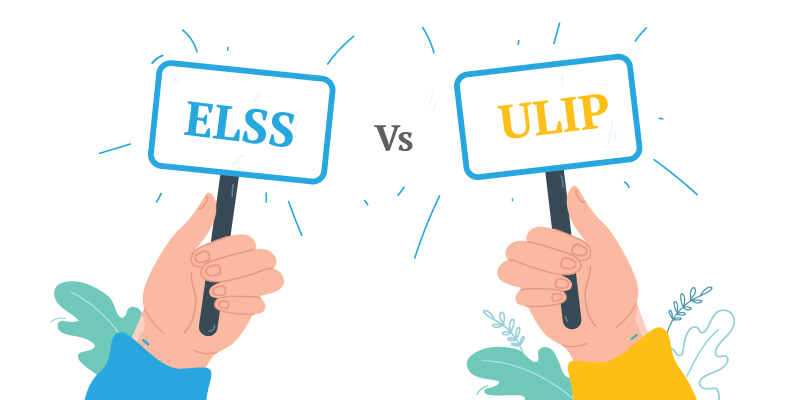The trending topic for discussion especially towards end of the financial year is investors looking for investment opportunities and tax saving scheme. This is when ELSS & ULIP schemes step in.
What are ELSS Funds?
- ELSS funds (Equity Linked Savings Scheme) are the only type of mutual funds eligible for tax deductions under section 80C of the Income Tax Act, 1961.
- Investments made in ELSS funds are diversified into various Equity stocks of listed companies based on the investment objective of the investor.
- The primary objective for investment in ELSS scheme is long term capital appreciation
- The eligible deduction under 80C is restricted to maximum of 1.5 Lakhs.
What are ULIP Schemes?
- ULIP stands for Unit Linked Insurance Plan.
- It is a 2 in 1 scheme which provides both insurance cover along with investment plans.
- It offers dual benefit of long term capital gains to fulfil your future goals along with financially protecting your family in case of any unfortunate circumstances.
- Investments made in ULIP schemes diversify the funds into Debt, Equity or both based on risk appetite of the investor.
Investment in ELSS Funds-Points to be taken into consideration.
- ELSS funds are subject to lock-in period with mandatory period of 3 years.
- Income earned are taxed as per rules of LTCG.
- The deduction available under 80C is a cumulative benefit along with various other instruments like PPF, NSC etc.
- ELSS funds fail to serve maximum benefits if solely approached with tax planning purpose.
- Proper investment planning will truly magnify the benefits one can derive from ELSS scheme.
- ELSS schemes do not provide fixed returns and are subject to market fluctuations.
- It is usually advised to invest in ELSS scheme through SIP as it is dependent on stock prices to get benefit of average out.
Investment in ULIP Scheme-Points to be taken into consideration.
- Investment in ULIP scheme turn out to be most fruitful in times of volatile market conditions as its insurance aspect acts as a safeguard for the investor.
- A high risk investor can opt for ULIP schemes in equity funds while a low risk investor should turn towards diversified mutual funds.
- Premium paid under ULIP schemes are tax deductible under 80C & at the time of maturity the amount is subject to deduction under Section 10.
- One should have deep understanding of various charges levied on entry and exit from the policy.
ELSS v/s ULIP
ELSS | ULIP | |
1) Lock-In Period | 3 years | 5 Years |
2) Returns | Comparatively higher | Comparatively lower as part of investment covers insurance aspect |
3) Taxability | Taxed at 10% on returns above 1 lakh | Taxed at slab rate applicable to investor |
4) Charges applicable | Comparatively lower charges. | Comparatively wide variety of higher charges |
5) Liquidity | More flexible as it has shorter lock-in period along with option to sell in stock exchange | Less flexible as longer lock-in period and investor has to surrender the policy to withdraw funds. |
6) Returns | Returns are dependent on scheme (12%-15%) | Returns can widely vary |
If an Investor is aiming to generate high returns with Tax Benefit and low lock in Period, one shall prefer investing in ELSS, however if a person aims at generating decent return with an Insurance Coverage and Tax Benefit, one should prefer investing in ULIP.
Authors:
Mihir Jain
Associate Consultant |Email: mihir.jain@masd.co.in |LinkedIn Profile
Kalp Lodha
Associate Consultant | Email: kalp.lodha@masd.co.in | LinkedIn Profile

